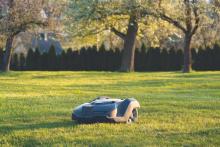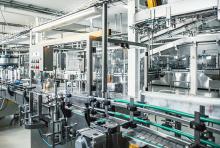- Support portal
- Evaluation Kits and partner products
u-blox Support
- Product documentation
Documentation
- Investor relations
Investor relations
Tech
|
12 Jul 2019
Energy harvesting for “net-zero-power” IoT devices
NB-IoT and other low power wide area technologies have made 10-year battery lives a reality in applications with minimal data transmission. Others need some extra power, which is precisely where energy harvesting fits in.

NB-IoT and other low power wide area technologies have made 10-year battery lives a reality in applications with minimal data transmission. Others need some extra power, which is precisely where energy harvesting fits in.
Imagine an IoT device that performs year in, year out, powered by a steady drip of power scavenged from its immediate surroundings. Temperature differences, vibrations, chemical gradients, electromagnetic radiation, or the more obvious: sunlight, wind, or other forms of kinetic energy, say from water flowing through a pipe – any external source will do, as long as it can be tapped into and transformed into electricity.
Devices that are able to continually top up their batteries with harvested energy can be deployed for longer, serviced less frequently, and in the best case, forgotten altogether. Take smart gas meters that produce as much power as they consume by leveraging the temperature difference between the cold conduit and the ambient air, or the vibrations generated by an electric motor: If well designed, their lifetime is limited only by the lifetime of the components they include.
Low power wide area communications technologies and energy harvesting are an obvious fit. Both aim to increase device autonomy, tackling the problem from opposite ends. LPWA protocols reduce the power needed to operate to a minimum. Energy harvesting increases the available power. Developing “fit and forget devices” that involve more power-hungry technologies, such as satellite-based positioning, can be more challenging.
To test the potential of energy harvesting on such an IoT-device and gain valuable expertise and insights, we decided to develop a prototype combining a u‑blox NINA-B1 Bluetooth module, a u‑blox SARA NB-IoT cellular module, and a u‑blox ZOE-M8Q GNSS receiver. The device was designed to harvest energy from three sources, using a solar cell, a vibration energy transducer, and a thermoelectric generator to generate electricity from temperature differences.

We summarized our development process as well as insights, and recommendations in a technical white paper that is available for download. You can find all the details on component selection, software development, and device configuration there, so we won’t go into it here. Instead, we’ll briefly summarize the main design consideration we derived from the experience.
Ultimately, designing a system for energy harvesting is no different from designing one for any other low power IoT device. It’s about optimizing the circuit design to bring down idle current as low as possible. High value resistors and low leakage components are key to achieving this. Then, careful software design is critical, using the deepest practical sleep modes in all components, managing energy expenditure, and taking account of high impedance hardware design.
Energy harvesting for IoT devices is clearly on the rise, as laid out in a 2017 EU report, on Energy harvesting to power the rise of the Internet of Things with commercial and residential applications making up more than half of the market.And with sensors and devices entering every aspect of our businesses, our cities, and our lives, the trend is unlikely to slow down any time soon.
Rob Meades
Senior Principal Engineer at u-blox



